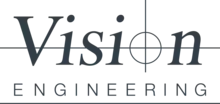MANTIS – A REVIEW OF THE LATEST CUSTOMER QUESTIONS
With the launch of Mantis 3rd Gen, International Product Manager, Stephen Sanderson has been chatting to a lot of existing and new customers. I caught up with him this week to find out what questions people have been asking.
First up, a potential customer considering the switch to eyepiece-less technology….
Q: I currently use a binocular stereo microscope. Can you explain why I should switch to an eyepiece-less microscope and what are the key differences between the three products in the range?
A: Well, let’s start with a really good reason to switch to Mantis – your health!
*Studies show that 95% of regular microscope users report visual problems and 85% of users report some sort of microscope related pain, whether that be neck strain, musculoskeletal issues, or frequent headaches.
Mantis eyepiece-less stereo microscope allows you to sit upright when looking into the microscope, improving your posture, alleviating neck strain and other musculoskeletal stressors. You’ll also notice that with the distance from the Mantis you can move your head slightly whilst still maintaining focus, further improving your working comfort. Furthermore, eyestrain is eased as more ambient light is introduced, reducing iris activity.
Video – The importance of an ergonomic microscope.
On to the second part of your question, the differences between Mantis IOTA, ERGO and PIXO.
PIXO comes equipped with an integrated 5MP camera and ViCapture image capture and annotation software.
The magnification range is x3 – x15, with the option to use SLWD lenses with x6 or x8 magnification. PIXO also comes with a multi-turret lens mount making it fast and easy to switch magnification.
ERGO is an optical only system, with all the features of PIXO, minus digital capabilities.
IOTA is ideal for operators who perform basic tasks, requiring excellent image quality and operator comfort but without the need for multiple checks or reporting.
IOTA comes with a single lens mount and a magnification range of x3 – x8.
Lighting options also vary between IOTA and ERGO/PIXO.
Steve also spoke to a company that manufactures high value Printed Circuit Boards for a variety of customers, including some from the Defence and Aerospace sectors.
Q: I work with high value, performance critical micro-PCBs, soldering individual components onto the base board. Working under a microscope with tools can be difficult. How best can I set up Mantis to get the maximum amount of space for tools without losing the quality of my image?
A: Mantis is known for having a long working distance and there are ways to configure your system to take full advantage of this. For many PCB manufacturers, the best setup is:
A PIXO or ERGO Mantis head with the multi-turret lens fixture to allow for quick change of magnification.
A Verso stand which offers easy ‘lift and lower’ functionality making positioning of the Mantis head quick and easy. The head can also be easily pushed out of the way when not in use to maximise the space on your workbench.
Use a Super Long Working Distance objective lens to maximise your working distance.
You’ll also find that your hand-eye coordination and accuracy is improved by access to your peripheral vision and the ‘dynamic view’ provided by the eyepiece-less design.
The next question was about reflective surfaces, but the solutions suggested apply equally to translucent subjects.
Q: We manufacture various complex machined parts which need inspecting and de-burring under a microscope. The metallic reflective surfaces can cause issues in spotting defects, and it can be difficult to check the finish and threads in machined holes. How best can we set up Mantis to ensure the best possible view?
A: To get the best out of any subject you have to put the best in. That’s why Mantis has five separate illumination sources and some of these will definitely make an important difference to your view of your subject.
Reflective surfaces can be difficult as highlights can be distracting and hide surface imperfections. Mantis has two banks of LEDs that can be adjusted independently or synchronised to get the best view of the subject. The adaptability of your lighting setup, in controlling highlights and shadows, will enhance both your 3D understanding of your component and any fine details.
When it comes to inspecting component cavities, closely packed features or cylinder surfaces EPI illumination allows you to send light along the same path as the Mantis view, ensuring surfaces that can be viewed are fully lit.
And if you have the Stabila stand you can use transmitted Illumination from the substage making it easier to recognise burrs on perforated edges.
With all these options you will certainly notice a difference in the speed and accuracy of your inspection!
Steve has covered the flexible lighting options, but what about flexibility when it comes to multiple operators performing a multitude of tasks?
Q: We’re a busy manufacturing company that offers our clients a range of products and many of our components are designed and manufactured in-house. This means we have a number of people using our microscopes, from designers to final quality control personnel and anything in between. They will also be inspecting a multitude of things, from features to connections to coating integrity. Can Mantis meet all these requirements?
A: Absolutely! It’s easy for multiple operators to set up the system to their individual needs, plus Mantis controls are extremely simple so anyone will become adept at using the system even on their ‘first go’.
The inter pupillary distance (IPD) control knob allows operators to quickly adjust the binocular image to align with their eyes to get the perfect view, whilst changing focus is simply a matter of adjusting the height of the head. That’s it – the operator is all set up and ready to go.
The eyepiece-less design of Mantis is also a benefit for multiple users in three ways. Firstly, it allows users to wear their usual spectacles, or safety glasses if needed. Secondly, the distance between the user’s eyes and the viewing head when in use minimises the risk of cross-contamination. And we’ve already covered the obvious and well-known ergonomic benefits of Mantis.
Now let’s talk about multiple applications….
The variety and choice of model and stand options allow you to configure the perfect set up for your applications, and the product features make it simple to switch from one component to another.
Long working distance and excellent 3D image makes manipulation or adjustments of a component easy.
The ability to switch magnification fast using the rotating multi-lens turret and the flexibility of the lighting options means you get an excellent image, no matter what you are looking at.
Plus, with Mantis PIXO you can easily capture images or video for your records, create overlays, and make annotations with ViCapture software.





